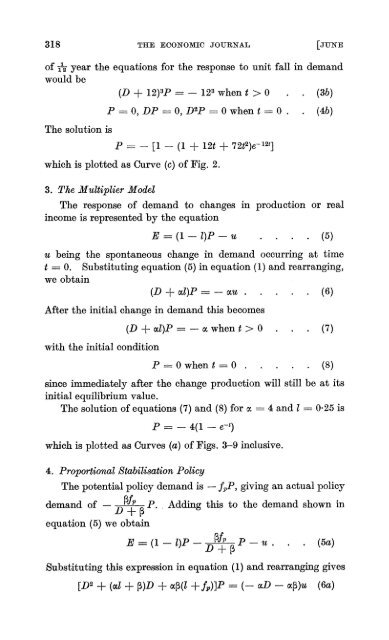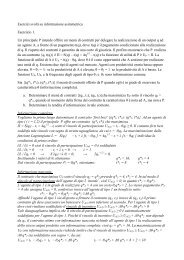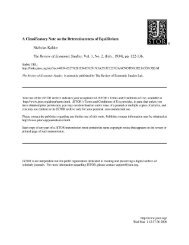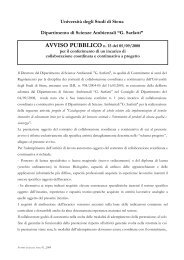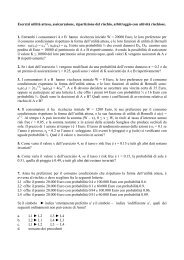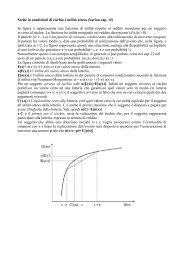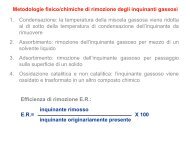Stabilisation Policy in a Closed Economy Author(s): A. W. Phillips ...
Stabilisation Policy in a Closed Economy Author(s): A. W. Phillips ...
Stabilisation Policy in a Closed Economy Author(s): A. W. Phillips ...
Create successful ePaper yourself
Turn your PDF publications into a flip-book with our unique Google optimized e-Paper software.
318 THE ECONOMIC JOURNAL [JUNE<br />
of 1-- year the equations for the response to unit fall <strong>in</strong> demand<br />
would be<br />
(D + 12)3P --123 whent>0 . . (3b)<br />
The solution is<br />
P=0,DP=O,D2P-Owhent=0. . (4b)<br />
P -[1 - (1 + 12t + 72t2)e12t]<br />
which is plotted as Curve (c) of Fig. 2.<br />
3. The Multiplier Model<br />
The response of demand to changes <strong>in</strong> production or real<br />
<strong>in</strong>conme is represented by the equation<br />
E = (1- I)P-u . . . . (5)<br />
u be<strong>in</strong>g the spontaneous change <strong>in</strong> demand occurr<strong>in</strong>g at time<br />
t = 0. Substitut<strong>in</strong>g equation (5) <strong>in</strong> equation (1) and rearrang<strong>in</strong>g,<br />
we obta<strong>in</strong><br />
(D + cl)P - CU. (6)<br />
After the <strong>in</strong>itial change <strong>in</strong> demand this becomes<br />
with the <strong>in</strong>itial condition<br />
(D + c)P = - cwhen t > 0 (7)<br />
P=Owhent=O. (8)<br />
s<strong>in</strong>ce immediately after the change production will still be at its<br />
<strong>in</strong>itial equilibrium value.<br />
The solution of equations (7) and (8) for o = 4 and I- 0-25 is<br />
p = - 4(1 - et)<br />
which is plotted as Curves (a) of Figs. 3-9 <strong>in</strong>clusive.<br />
4. Proportional <strong>Stabilisation</strong> <strong>Policy</strong><br />
The potential policy demand is - fpP, giv<strong>in</strong>g an actual policy<br />
demand of - P' P. Add<strong>in</strong>g this to the demand shown <strong>in</strong><br />
equation (5) we obta<strong>in</strong><br />
X = (1 -I)P - PfP P P-q u . (5a)<br />
Substitut<strong>in</strong>g this expression <strong>in</strong> equation (1) and rearrang<strong>in</strong>g gives<br />
[D2 + (cX + P)D + xt(l +fp)]P = (- ocD - cx3)u (6a)


